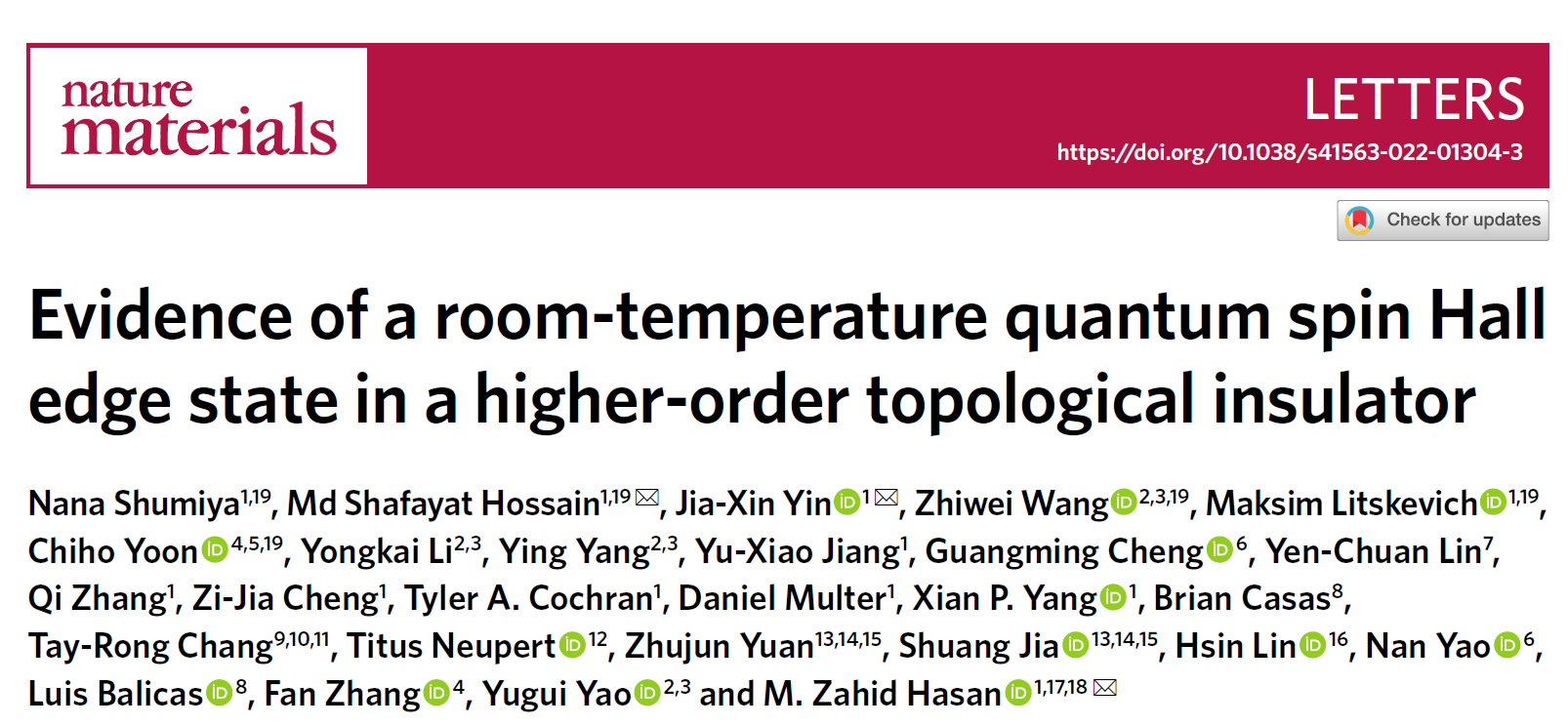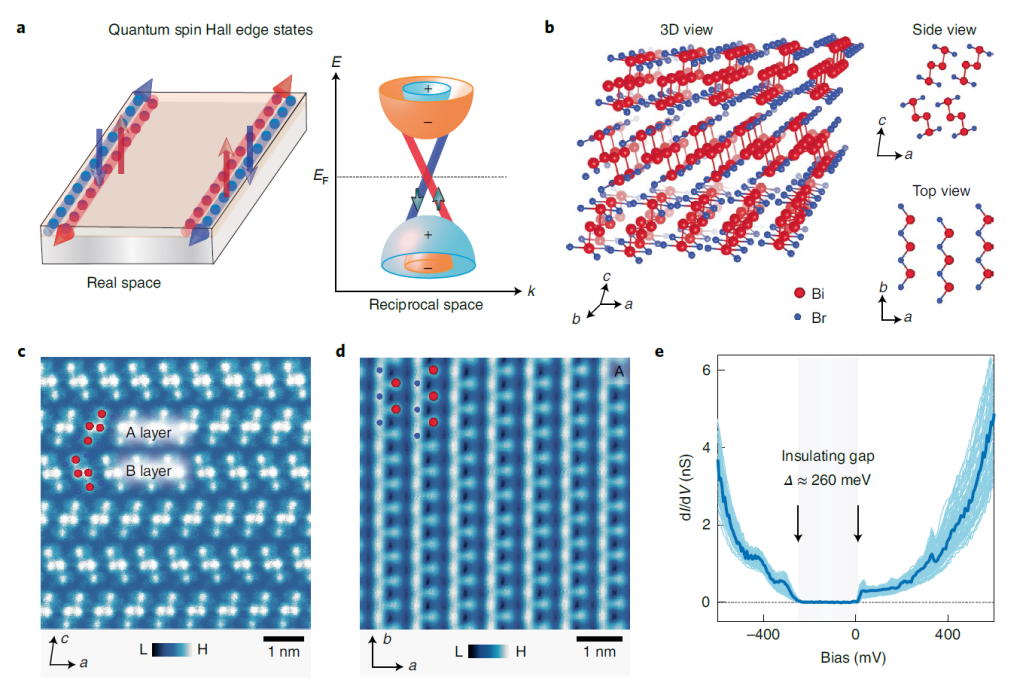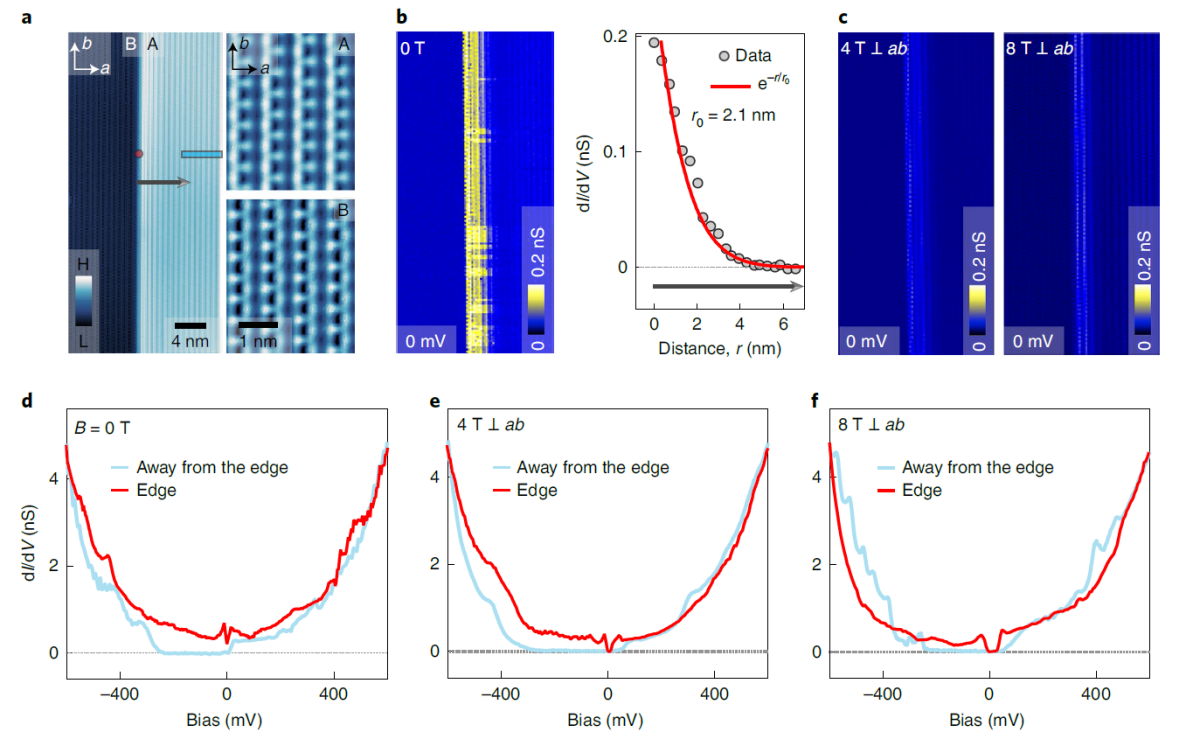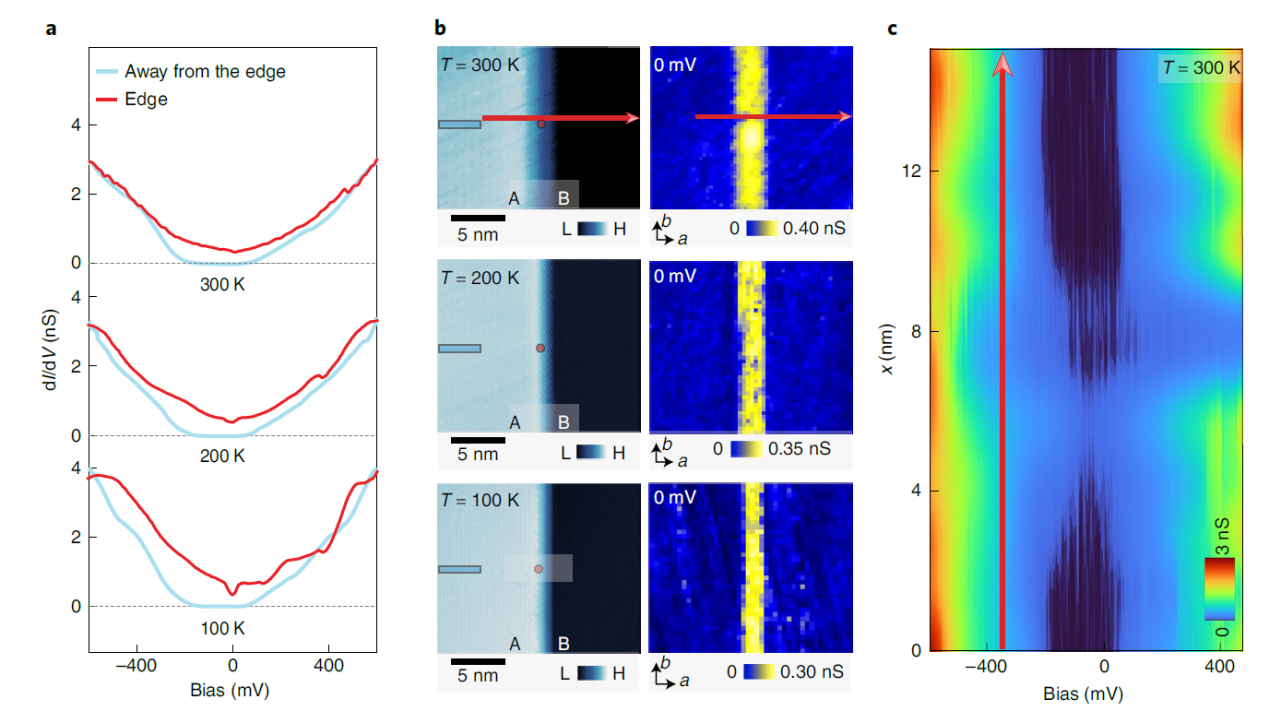Beijing Institute of Technology and Princeton University collaborate to found the evidence for the existence of quantum spin Hall edge state
来源: 作者: 发布时间:2022-10-14
Recently, Yugui Yao's group from the School of Physics, Beijing Institute of Technology, in cooperation with M. Zahid Hasan's group from the Princeton University etc., observed quantum spin Hall edge states at room temperature on the surface of high-quality Bi4Br4 single crystal materials. This find not only experimentally confirmed the theory that Yugui Yao's group proposed eight years ago [Nano Lett. 14, 4767 (2014), NJP 17, 015004 (2015)], but also bring hope for the further realization of the quantum spin Hall effect at room temperature. The relevant results were published in the recent publication of Nature Materials, and Zhiwei Wang, a member of Yugui Yao's group, is one of the six co-first-authors of the paper.
Quantum spin Hall insulators are a novel two-dimensional system with bulk insulating and edge conduction. The edge states are caused by the topological properties of the bulk state and are not backscattered by non-magnetic impurities, which can realize ideal dissipationless conduction channels, thus it has a huge application prospect in low-energy electronic devices. Finding and realizing quantum spin Hall insulators and their edge states at room temperature is the key to related device applications. Yugui Yao's group and their collaborators have been working on finding quantum spin Hall insulators with large energy gaps for more than a decade. In 2014, Professor Yugui Yao and Dr. Jinjian Zhou et al, predicted a feasible large-gap quantum spin Hall insulator material Bi4Br4 and Bi4I4 systems. Bi4Br4 single crystal is a semiconductor with a layered structure, and the interlayer coupling is weak van der Waals interaction. Theoretical calculation shows that its single-layer structure is a quantum spin Hall insulator and the bulk energy gap is much higher than room temperature [Nano Lett. 14, 4767 (2014)]. They also found that Bi4Br4 is an excellent material system for detecting the room temperature quantum spin Hall insulating state. On the one hand, the monolayer Bi4Br4 is composed of infinitely long one-dimensional chains side by side, and the coupling between chains is weaker than the coupling within chains. The quasi-one-dimensional structural properties are beneficial to the formation of atomically flat edges. On the other hand, due to the extremely weak interlayer coupling, the quantum spin Hall insulating state can stably exist on the step edges of the single-crystal Bi4Br4 surface [NJP 17, 015004 (2015)].
Since then, Yugui Yao's group has carried out a full-chain theoretical and experimental study on the Bi4Br4 and Bi4I4 systems: theoretically, it was found that single crystal beta-Bi4Br4 and beta-Bi4I4 are weak topological insulators [PRL 116, 066801 (2016)], which was experimentally confirmed by a Japanese’s group (published in Nature); the team also synthesized high-quality Bi4Br4 single crystals and applied a patent; using high-pressure technology, the superconductivity and topological properties were simultaneously observed under external pressure, which shows this system may be a topological superconductor [PNAS 116, 17696 (2019]; combined with optical technology, it is found that there is strong infrared absorption at the edge, and the lifetime of excited carriers in the topological edge state is much longer than that in the bulk state, indicating that the material has application in Potential of infrared optics and photoelectric detection; applying Bi4Br4 as a saturable absorber in a fiber laser to obtain a stable infrared pulsed laser output [APL 120, 053108 (2022)]. For more details, please go to the recent invited review paper [Adv. in Phys. X, 7:1, 2057234 (2022)] written by Yugui Yao et al.
Recently, Yugui Yao’s group and Princeton University’s group cooperated to found the room-temperature quantum spin Hall state on the surface of Bi4Br4 using vector magnetic field and variable temperature STM, which verified the theoretical prediction proposed by the team in 2014. Zhiwei Wang from Yao’s group prepared high-quality Bi4Br4 single crystal samples by self-flux method. The STM measurement results show that the bulk state of Bi4Br4 has an energy gap of 260 meV, as shown in Figure 1(e); The zero-gap edge states with in indicate a topological bulk state-edge correspondence as shown in Fig. 2(d). A further applied magnetic field can make the zero-gap edge state generate a gap, which is consistent with the inherent time-reversal symmetry protection, as shown in Fig. 2(e)-(f). Finally, by observing the edge states at different temperatures, we found that this edge state still exists even at room temperature of 300K as shown in Fig 3. This discovery will further promote the exploration of high-temperature transport quantization behavior in Bi4Br4 materials, and provide a solid material and physical basis for the material's future practical applications.

Fig 1. A large (about 260meV) insulating gap is observed

Fig 2. Evidence of a quantum spin Hall edge state and its response to an applied magnetic field

Fig 3. Room temperature quantum spin Hall edge states observed
This work was supported by the National Key Research and Development Program of China, the National Science Foundation of China (NSFC), and the Strategic Priority Research Program of Chinese Academy of Sciences.




